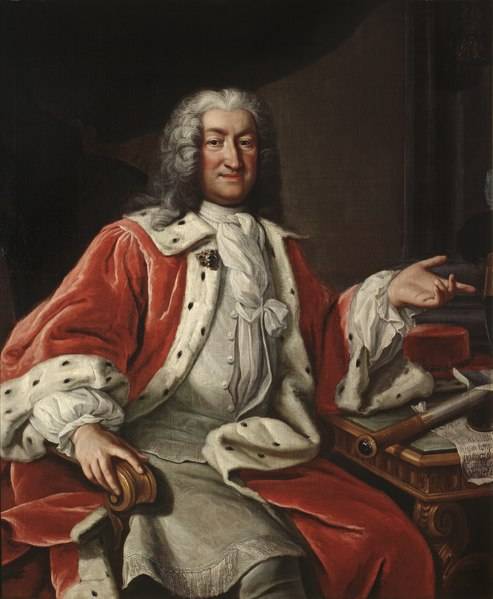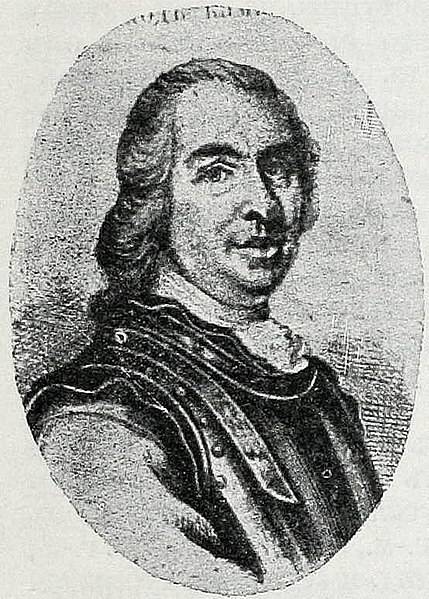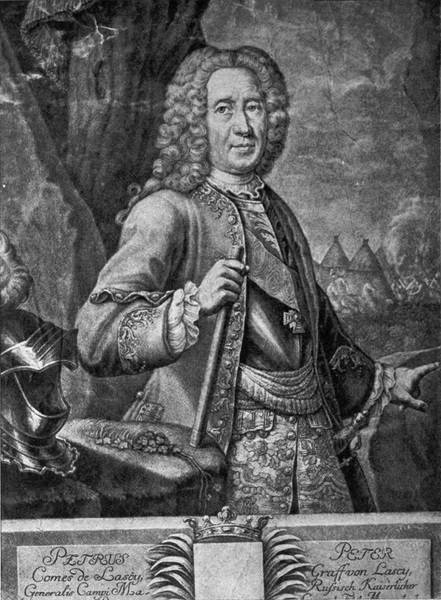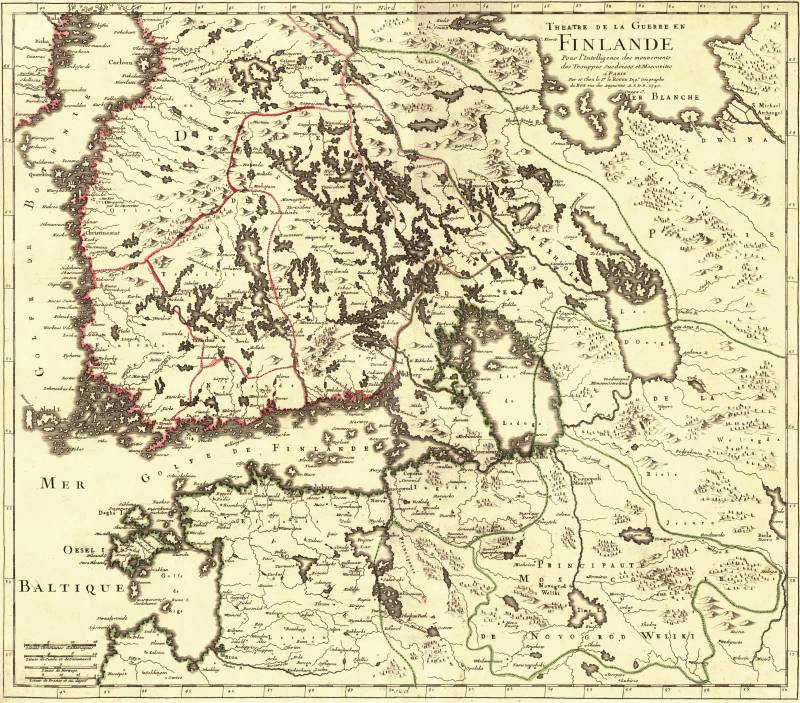"War of the Hats". How the Swedes tried to take revenge for the Northern War
The Russian-Swedish war began 280 years ago. Sweden, hoping to return the lands lost during the Northern War, declared war on Russia. Never Swedish weapon was not covered with such shame: the Swedish army surrendered, and Russian troops occupied all of Finland.
However, St. Petersburg pardoned Stockholm and, according to the Abo Peace Treaty of 1743, returned most of Finland, leaving behind only the Kymenigord flax and the Neishlot fortress. In Sweden itself, accustomed to victories and glory, this defeat was taken very hard. The army command (Karl Levengaupt and General Henrik Buddenbrock) was executed.
The situation on the eve of the war
During the Northern War of 1700-1721, Russia inflicted a heavy defeat on Sweden, the Russians regained access to the Gulf of Finland (Baltic), Izhora land (Ingria), part of Karelia, received Livonia (Livonia) and Estland, the islands of Ezel and Dago. The Russians returned Finland to Sweden and paid a ransom for the Baltics of 2 million thalers (efimkov, which was Sweden's annual budget or half of Russia's annual budget).
In the course of a long war, Sweden lost its former naval power, the role of one of the leading powers in Europe. Most of Sweden's possessions on the southern coast of the Baltic Sea were lost, which greatly weakened the country's economic position. Before the Great Northern War, most of the income of the royal house, aristocracy and merchants came from land in Finland, the southern Baltic region and Swedish possessions in Germany. Agriculture in Sweden itself could not feed the country's population; now they had to buy bread and other products from the lost lands. Also, the country was exhausted by the war, large human losses, the ruin of Finland and had a large national debt.
In Sweden itself, the so-called era of freedom began, the king's power was significantly curtailed in favor of the Riksdag (unicameral parliament), which received not only legislative power, but also a significant part of the executive and judicial power. The parliament was dominated by nobles, clergy and rich townspeople (burghers), the peasants lost their former importance. Gradually, all power was concentrated in the hands of a secret committee, royal power (King Frederick I of Hesse) was nominal. In essence, Sweden has become an aristocratic republic.
The government of Arvid Horn (was in power in 1720-1738) tried to deal with internal affairs, concentrated on the development of shipbuilding, trade, and the timber industry. The peasants were granted the right to purchase crown lands. In foreign policy, Stockholm advocated maintaining good relations with Russia. In 1724, an alliance was concluded between Russia and Sweden for 12 years with the possibility of extension. In 1735, the union was extended.
In the second half of the 30s in Sweden, in opposition to the party of "caps" led by Gorn, which advocated a cautious, peace-loving policy, the "party of hats" intensified, which demanded revenge in the war with Russia and the restoration of Sweden's political positions in Europe. The Swedes forgot about the horrors of the war and wanted revenge. The revanchists were supported by young nobles, large industrialists and merchants who wanted the return of the rich lands on the southern coast of the Baltic Sea.
With the outbreak of the Russo-Turkish War in 1735, the positions of the war party were strengthened. Material support for the revanchists was provided by France, which, in anticipation of the struggle for the Austrian inheritance, tried to tie Russia with Sweden to a war. In 1738, at the Riksdag, the "hats" were able to win over the majority of the noble and burgher classes, which made it possible to put the secret committee under their control. In December 1738, Gorn was forced to resign, as well as other prominent members of the party "caps" in the State Council.

Swedish statesman Arvid Bernhard Horn (1664-1742). Portrait of the work of the artist. Lorenza Pasha the Elder
"Prefer a mighty war over a shameful world"
One of the leaders of the party "hats" Karl Tessin said that Sweden should be ready "to prefer a mighty war to a shameful peace." Sweden began to arm the fleet, two infantry regiments were sent to Finland. A treaty of friendship was concluded with France in 1738. France promised Sweden to transfer subsidies to it in the amount of 300 thousand Riksdaler per year within three years. In December 1739, the Swedes entered into an alliance with Turkey. But the Turks promised to intervene in the war if a third power came out on the side of Russia. In response to this unfriendly step, the Russian Empress Anna Ioannovna banned the export of grain to Sweden from Russian ports.
In St. Petersburg, they discovered the military preparations of the Swedes and made a corresponding request to Stockholm. Sweden replied that the border fortresses in Finland are in a deplorable state and troops have been sent to restore order. In addition, Russia strengthened its troops in the Finnish direction, so Sweden sent reinforcements to Finland.

Swedish general and politician Karl Emil Loewenhaupt (1691-1743). Military encyclopedia of I.D.Sytin
Conspiracy plans in Russia
Anna Ioannovna died in October 1740. She left the throne to the infant emperor Ivan and his regent Biron. However, Field Marshal Munnich carried out a coup d'etat, arrested Biron and his henchmen.
Anna Leopoldovna (Anna Ioannovna's niece) became the ruler of Russia, her husband was Anton-Ulrich of Braunschweig. He received the rank of generalissimo. The Brunswick family poisoned Minich, the most talented commander and manager of the time (as he showed in the war with the Ottomans), into retirement. However, Anton-Ulrich was a complete insignificance, in the state and military sense, like his wife. The whole country was left to the mercy of German rogues like Osterman. And everyone saw it.
The most realistic candidate for the Russian throne was Elizaveta Petrovna. She was seen as the daughter of Peter the Great, forgetting both the illegality of her birth and the cruel and ridiculous decrees of her father. Russian officers, nobles and officials are tired of disorder, German dominance, the power of insignificant monarchs. Elizabeth had practically no education, but she had a strong natural mind, prone to intrigue and cunning. Under Anna Ioannovna and Anna Leopoldovna, she pretended to be an innocent fool, without interfering in state affairs, and avoided imprisonment in a monastery. At the same time, she became a favorite of officers and guards.
After the death of Anna Ioannovna, two conspiracies arose in St. Petersburg in favor of Elizabeth. The first arose among the guards regiments. The other consisted of the French and Swedish ambassadors, the Marquis de la Chetardie and von Nolke. They made friendship with Elizaveta Petrovna. Moreover, de la Chtardie came into contact with Elizabeth at the direction of his government. And Nolke acted more on his own initiative. The French wanted to overthrow the pro-German government in Russia, use Petersburg for their own purposes.
Elizabeth was promised help in a palace coup against the Braunschweig family. Elizabeth was asked to give a written commitment to transfer the lands lost during the Northern War to Sweden. They also asked the princess to write an appeal to the Russian troops in Finland so that they would not resist the Swedes. However, Elizabeth was smart enough not to give such a written commitment. In words, she agreed to everything. The Swedes and the French gave her money for the coup.
Thus, in Stockholm, preparing for a war with Russia, they hoped for a favorable political situation - the Russian Empire was at war with Turkey. There was hope that the Russians could be forced to make concessions in the north. In addition, Russia was going through hard times after the death of Peter the Great. All forces and attention were concentrated in the capital, where there was a struggle for power. Many important economic and military projects were abandoned. The Baltic Fleet fell into decay. And a possible coup d'etat, as the Swedes hoped, would weaken Russia.
The Swedish ambassador in St. Petersburg Nolken supported the party of "hats" and sent reports on the decline of Russia and its army after the war by the Turks. Allegedly, the regiments are made up of some young soldiers who do not know how to handle weapons, in many units there are not enough up to a third of the soldiers to reach the regular strength, etc. Basically, it was misinformation concocted by the Swedish ambassador to strengthen the position of the war party. In Stockholm, they concluded that Russia was not ready for war, if the Swedish army crossed the border, the power of Anna Lepoldovna and the Germans would collapse. The new Empress Elizabeth, in gratitude for her help, will quickly sign a peace that is beneficial to Sweden, and will give the Swedes vast lands.
The war with the Turks did not lead to victory. The Austrian allies suffered a heavy defeat and made a separate peace with Porta, ceding Belgrade and the Serbian kingdom. With the mediation of the French, who were trying to strengthen their positions in St. Petersburg, Russian-Turkish peace negotiations began. In September 1739, the Treaty of Belgrade was concluded. Russia returned Azov, but pledged not to strengthen it, a small area on the Middle Dnieper. Russia was forbidden to have a fleet in the Azov and Black Seas. In fact, the peace in Belgrade nullified almost all the successes of the Russian army in the war.
The Belgrade peace nullified Stockholm's hopes for success in the war with Russia. The Russian army was liberated in the south and could fight in the north. However, the war party retained its positions and argued that the situation was so favorable that Sweden would easily recover everything that was lost after the Nystadt Peace.
Declaration of war
In October 1739, 6 thousand soldiers were sent from Sweden to Finland. In Sweden itself, tension was growing, the urban mob attacked the Russian embassy.
Another reason for the war was the murder in June 1739 of the Swedish diplomat Count Sinclair, who was returning from Turkey. Russian officers, sent by Field Marshal Munnich, "took over" the Swedish major in the Austrian possessions. Important documents were seized. This murder caused great outrage in Sweden. Empress Anna Ioannovna, in order to calm the European public, exiled agents to Siberia. After a while they were returned to the European part of Russia.
In 1740 - the first half of 1741 in Sweden, the idea of war with Russia received the support of all classes. The Peace Party remained in the minority. The commander-in-chief was appointed a veteran of the Northern War, one of the leaders of the "hats", General Karl Emil Loewenhaupt. On July 28, 1741, the Russian ambassador in Stockholm was informed that Sweden was declaring war on Russia. The cause of the war in the manifesto was declared Russia's interference in the internal affairs of Sweden, a ban on free export of grain and the murder of Sinclair.
The Swedes had 18 thousand soldiers in Finland. Near the border at Wilmanstrand were two detachments of 4 under the command of Generals Wrangel and Buddenbrock. The garrison of Wilmanstrand numbered no more than 600 men.
Through their envoy Bestuzhev, who knew Swedish affairs well, Petersburg knew that the party of "hats" would unleash a war. Therefore, a strong corps was sent to Karelia and Kegsholm. Another corps was concentrated in Ingermanland, in order, if necessary, to send it to Finland. We also tried to put in order the fleet (14 battleships, 2 frigates), but it was in poor condition and this year the sea did not go out. To cover the capital at Krasnaya Gorka, troops were stationed under the command of Prince Ludwig of Hesse-Homburg. Small detachments were sent to Livland and Estonia under the command of General Levendhal to guard the coast.
Field Marshal Peter Lassi was appointed commander-in-chief of the army in Russian Finland. He was an experienced commander who went with Tsar Peter throughout the Northern War. The corps, which stood at Vyborg, was commanded by General James Keith, a Scottish aristocrat in the Russian service.
In early July 1741, Russian troops were concentrated near Vyborg. General Keith, seeing that the Vyborg fortress was weakly defended and the enemy could bypass it, taking the road to Petersburg, carried out large fortification works.

Russian commander, Count Pyotr Petrovich Lassi (1678-1751)
To be continued ...

Information